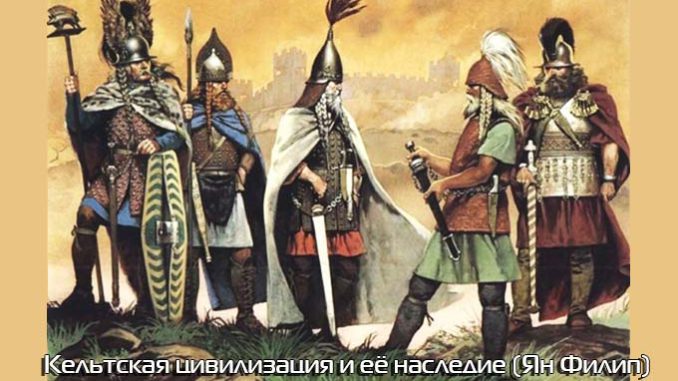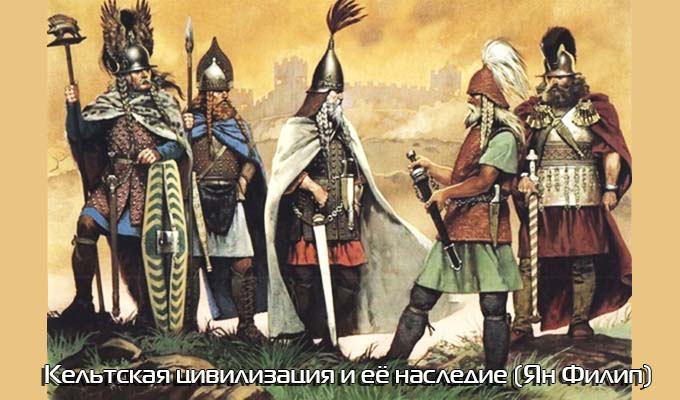
In an area where the Celts penetrated at the earliest around the end of the 4th century and where they came into contact with the Ligures, they also found themselves in the closest contact with the Greek art scene. Therefore, one cannot speak of pure Celtic art here. According to legends, the Celts learned the technique of building fortifications from the Greeks. This statement does not apply to Celts in general, but to this South French Celtic-Ligurian region, Gallia Graeca in Provence. Oppidums with fortress walls, correct streets and temple buildings soon emerged in this area, which clearly indicates the borrowing and copying of Greek and Oriental specimens with their terraces, propyles (monumental entrance gates with columns) and other elements unusual for the interior. Compared to the Middle European oppidums, they are more similar to cities. In the south of France, therefore, the Celts learned a lot, learned a lot. The Celtic-Ligurian Oppidum Entremont (Dep. Bouche du Rhône), the centre and at the same time the sanctuary of the Salleys, was built in the massive area as early as the 3rd century and was later destroyed by the Romans in 124 B.C. Its wide walls of stone quadrums and rounded towers have been preserved in some places up to 4 m high. The tetrahedral, dry masonry houses stand closely together, so the walls are common, and aligned into wide, correct streets. The houses were protected from the impact of wagon wheels by special pedestals and slabs. In the cellar pits there were many local and imported storage vessels, and the basic requirements of the sewerage system were not forgotten. In some places even the remains of a simple mosaic were found. In this urban-type settlement, where F. Benoit had been excavating for several years, there was a sanctuary at the highest point. It was accessed by a road about 100 m long, fringed with sculptures of heroes. In the ruins of the sanctuary remained quadrangular limestone columns with human heads displaced on them (Fig. 35, 12 heads on one column) – the remains of the so-called “hall of heads”. In the cult hall, real human heads (the cult of severed heads) were attached with rough nails in niches of stone pillars. In the part, opened to date, found a lot of fragments of sculptures made of limestone, including the head of a child, the head of a prince with hair combed with a wreath in the form of a tiara, a male head with curly hair, female head, a stone with four heads (2 male and 2 female), a warrior’s head and almost whole sculptures of warriors. It is truly a whole glyptotheca, a collection of sculptures and torsoes, albeit heavily damaged, as the Romans destroyed the city in 124 and destroyed the sanctuary as a possible centre of future resistance. This was the case elsewhere in Provence. In the Oppidum Roquepertus (Bouche du Rhône), the portico (façade with columns) of the sanctuary was composed of three stone pillars, once painted, with recesses for human skulls. Above the transverse log was a stone, more than half a meter high figure of a bird preparing to take off, apparently as a symbol of the way to the world. We find here also “Hermes” with two heads, between which the beak of the predator stands. All the props were divided into two terraces. Sculptures in sitting position (, pose of Buddha”) represent the god or prince or heroized dead, one with a neck hryvnia and a bracelet, the other in clothes with a belt; they also bear traces of the original coloring. All this suggests that local sculptural workshops were established in the south of France; stone statues, primarily of a religious and cult nature, were created there. The impact of the Greek environment is obvious. Local artists, however, did not always correctly understand the patterns and idea of individual designs and the proportionality of proportions in the overall concept. Some features of the sculptures of these heroes in the South French shrines are particularly characteristic: outstanding cheekbones, a straight nose with a wide nose bridge, eyebrows in a semicircle, hair hanging low above the convex forehead; some of these features are also found in purely Celtic sculpture. The famous “Taraske” (fig. 37) from Nouveau (Bouche du Rhône), a sculpture of a monster whose body resembles a lion resting with its paws on two human heads with long beards, taken also as “tetes coupees” – cut heads, is made of local limestone in the pre-Roman period. It may be a symbol of death, eternal silence, a motive that was particularly common in the later Latin period; but its origin and true meaning are difficult for us to determine at present. The cult of skulls seems to have been very common throughout the territory. In the Celto-Iberian oppidum of Puig Castelar, human skulls were also found, in which even the nails with which they were once nailed are preserved. The Celtic-Ligurian region, due to its geographical position, has had various influences since ancient times. The route from Italy ran through Nice (Nikea) and Ol Biu near Toulon to the west to Ampurias in Catalonia. In Massilia itself, founded around 600, was the shrine of Artemis with Ionic-style steles (with a sitting goddess in niches) of the same character as in Ephesus in Asia Minor; the remains of the city walls also bear the imprint of Asia Minor. The Hellenistic stele (3-2 centuries) belongs to a later period. However, many other and very ancient monuments have been preserved in the immediate vicinity of the Maslia. Long-standing, still unfinished excavations of T. Rolland in Saint-Blaise (dep. Bouche du Rhône) discover the remains of the well-preserved Greek city of Mastramele, founded earlier Masilia, at the latest in the 7th century. During the Celtic expansion, this city with its well protected acropolis was surrounded by strong walls. The Celtic-Greek sculpture of a lion from Le Bo (Bouche du Rhône), dating back to around the 3rd century, features features oriental specimens but is made of local limestone. Some of the settlements in Provence and Languedoc survived many centuries, and the local environment was gradually subjected to Eastern and Greek, then Iberian, Celtic and Roman influences. In the last phase, the concentrated economic pressure and cultural influences, combined with successive Romanizations, penetrated into the rest of France from these southern regions. Anzeriun (Erol), an oppidum on the South French coast between the Bezier and Narbonne in Languedoc, originated on a rocky hill between the mouths of the Orb and Od rivers. Cyclopean walls turned it into a first-class fortress in the 5th century. Then Iberian influences penetrated here, and later, in the Celtic period, the place became an important oppidum, reaching 750 m long and 300 m wide, which could accommodate about 8000 inhabitants. Its settlement from the Neolithic and Bronze Age to the Celtic-Iberian period is confirmed by the corresponding deposits of the cultural layer. We meet here with antique, Greek, Italian, Etruscan and early Roman influences; Hannibalu at the end of the 3rd century was known primarily for its Celts. In Glanum (Greek: Glanon) in the lower reaches of the Rhone, near Arles (Bouche du Rhône), there are also remains of a city with at least four phases of settlement. The oldest Celtic monuments with their local shrine are often reminiscent of Entremont and Roquepertus in sculptures. From Hellenistic times, the remains of the 2nd century walls have been preserved there, as well as the peristyle (column hall) surrounding the site (rainwater basin) and the mosaic, which seems to be the oldest in present-day France. But the following centuries have also left their mark here: many houses from the Romanization period of the middle of the last century and evidence of lively construction activities of the Gallic-Roman period until the last third of the 3rd century. The city was destroyed by the Germans around A.D. 270. Glanum has preserved the oldest city gate in Gaul in the middle of the last century (period around 40) with reliefs on the side walls depicting captured Gauls.
The Romanization of Gaul in this South French region quickly acquired strong strongholds. Suffice it to bring Arles with a theater built during Augustus, with a stage that reaches 104 m in length, and with many sculptural decorations (marble figures of dancers), Orange (Vo-clouse), where also in the days of Augustus appeared theater with water supply, Roman bridges in Apta (Apta Julia) or Vaison Conciorum (Vaison-la-Romaine, Vocluse), once an important Celtic city, and during Romanization, the richest city on the left bank of the Rhone, or finally, the temple buildings at the sacred spring in Nîmes. Immediately next door to Entremont was the city of Aqui Sekstiev. Under all this influence was then the development of Gaul itself.



Leave a Reply